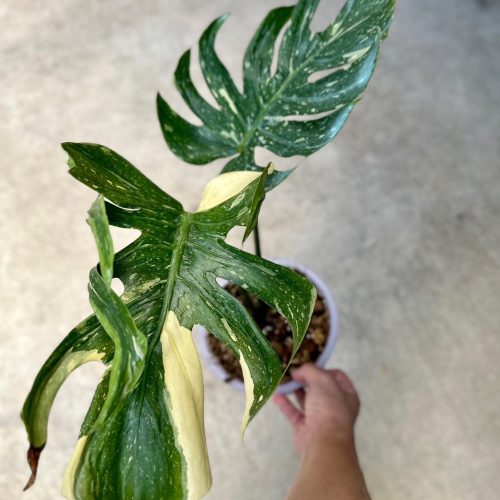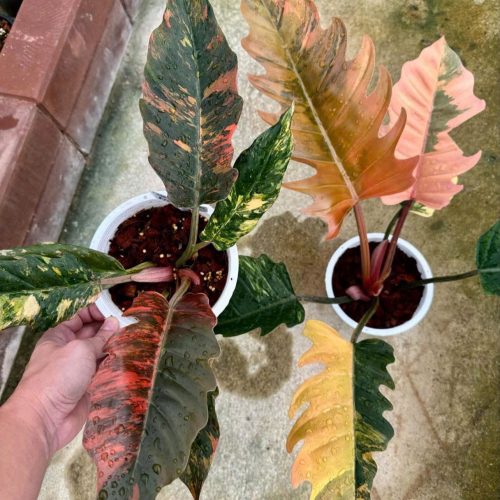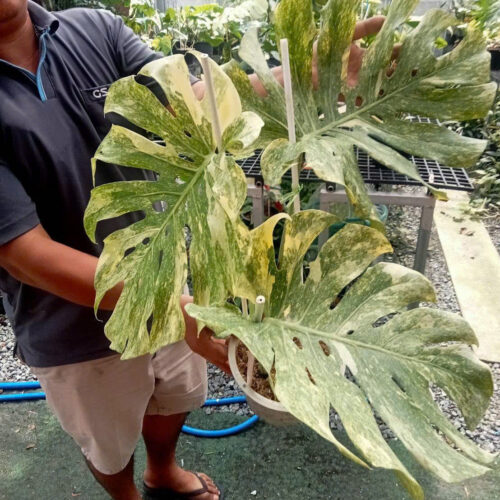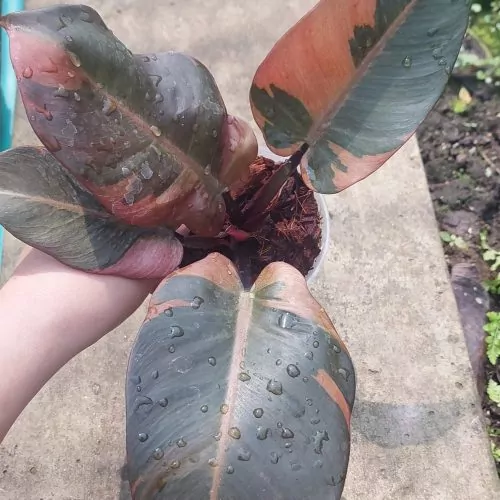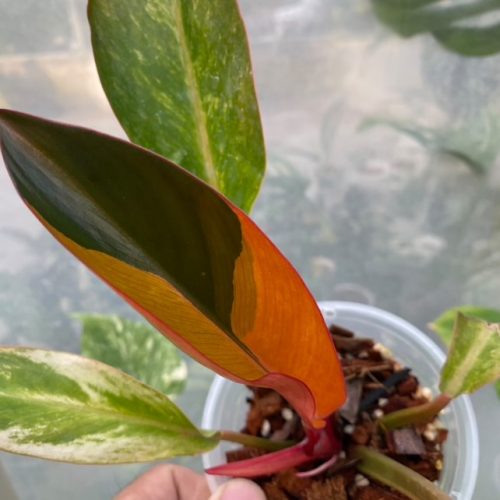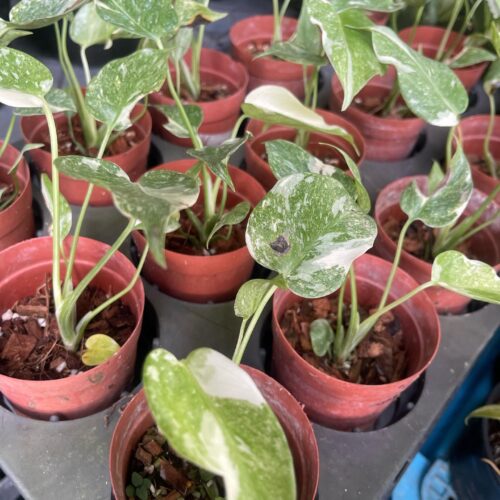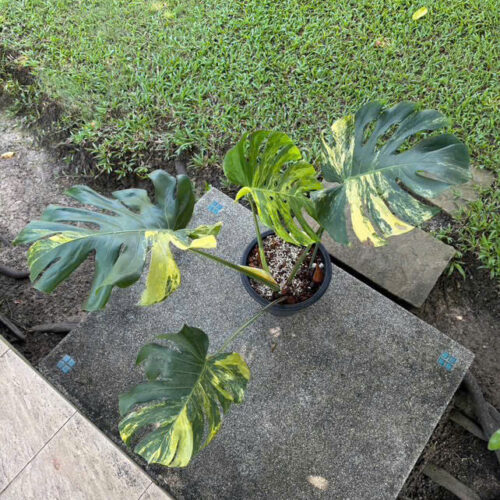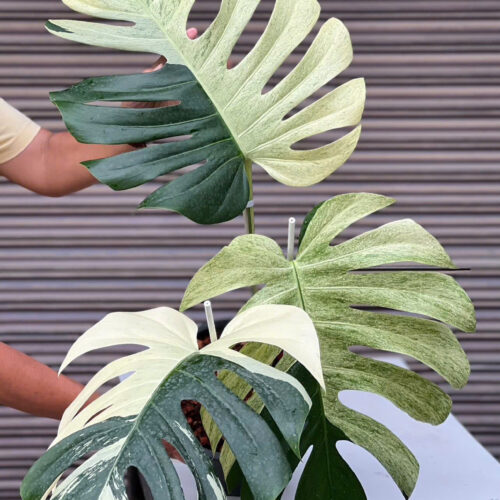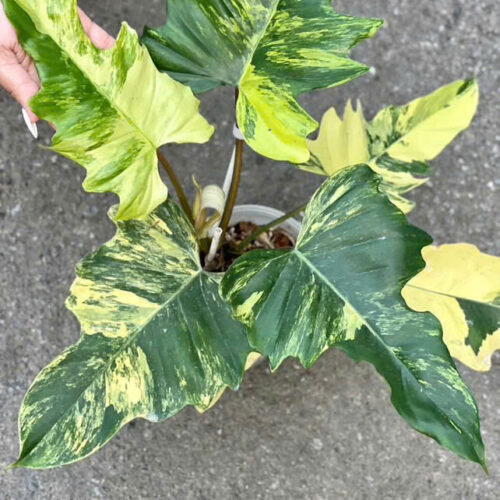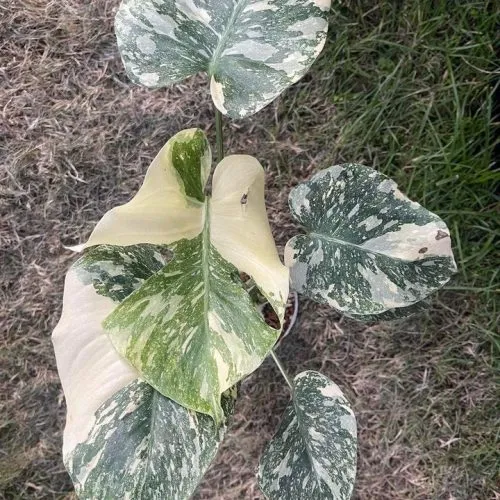Aroids, a diverse family of over 3,700 species, captivate plant enthusiasts with their captivating foliage, intriguing blooms, and adaptability to various environments. These tropical beauties, originating from the Araceae family, include renowned members like the Monstera, Philodendron, ZZ Plant, and Peace Lily. Whether you’re a seasoned plant parent or just starting your indoor jungle, mastering aroid care can unlock the full potential of these magnificent plants.
In this comprehensive guide, we’ll delve into the secrets of aroid care, empowering you to create a thriving oasis of greenery in your home.
Understanding Aroid Needs
Like any living organism, aroids have specific needs for optimal growth and vitality. By comprehending these fundamental requirements, you can tailor your care routine to suit their unique preferences.
Light Conditions
Aroids generally thrive in bright, indirect light. However, their light requirements can vary depending on the species. Monsteras, for instance, can tolerate low-light conditions, while Calatheas prefer brighter, filtered light.
Experiment with different locations in your home to find the ideal spot that provides ample light without exposing your plant to direct sunlight, which can scorch its leaves.
Here are some tips for providing the right light conditions:
- Place your aroid near a bright, north-facing window. The soft, ambient light from a north window is ideal.
- If you only have southern or western exposures, use sheer curtains to filter the intense afternoon sunrays.
- Turn the plant periodically so all sides receive equal light exposure. This encourages even, balanced growth.
- Use artificial grow lights to supplement natural lighting if needed. LED plant bulbs provide full spectrum illumination.
- Monitor for signs of insufficient light, like leggy growth and loss of leaf markings, and adjust the location accordingly.
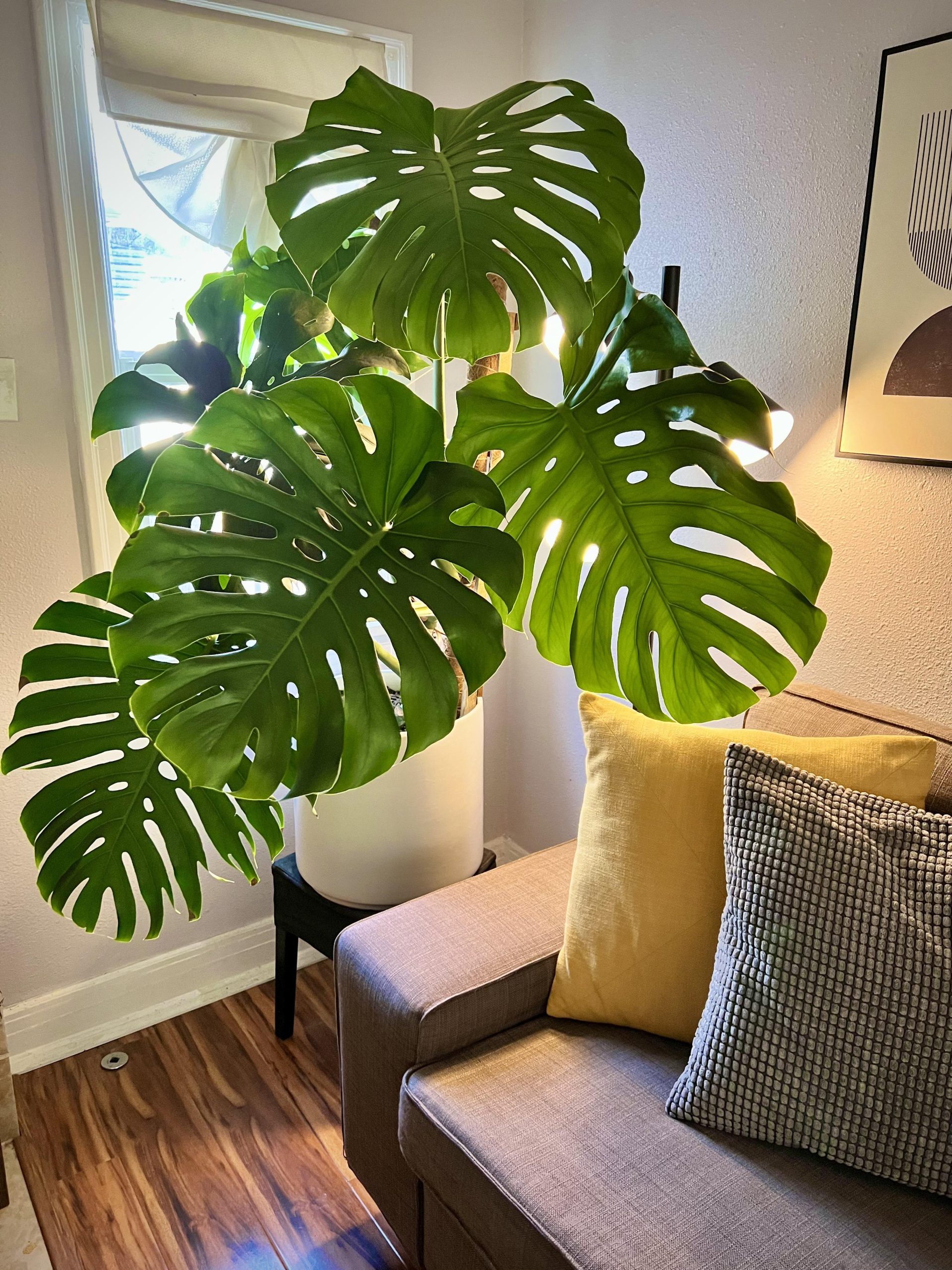
Watering Schedule
Knowing when and how much to water your aroid is crucial for its health. Overwatering is a common pitfall, leading to root rot and fungal issues. Allow the top inch of soil to dry out between waterings to prevent waterlogged conditions. To avoid underwatering, check the soil moisture regularly by inserting your finger into the soil. If it feels dry to the touch, it’s time to replenish the moisture supply.
Follow these tips to hone your watering technique:
- Water thoroughly until it drains freely from the drainage holes when you do irrigate, then discard any excess water in the saucer. This encourages deeper root growth.
- The frequency of watering depends on factors like sunlight exposure, temperature, humidity, soil mixture, and pot material. Pay attention to your plant’s needs.
- Humidity-loving plants like Calatheas may need more frequent watering than drought-tolerant ZZ Plants.
- Reduce watering frequency in the winter when growth slows.
- Always allow the top of the soil to dry before watering again to prevent soggy soil.
| Plant | Ideal Watering Frequency |
| – | – |
| Monstera | 1-2 times per week |
| Philodendron | 1-2 times per week |
| ZZ Plant | Every 2-3 weeks |
| Peace Lily | 1-2 times per week |
Soil and Drainage
Proper soil and drainage are essential for healthy root development. Choose a well-draining potting mix that allows excess water to flow out freely. A mixture of peat moss, perlite, and orchid bark is a popular choice for aroids. You can also incorporate organic matter like compost to enhance soil structure and fertility.
Here are some top tips for getting your soil mix right:
- Use a quality, commercial potting soil formulated specifically for indoor plants rather than garden soil which can become waterlogged.
- Amend regular potting mix with perlite, orchid bark, coco coir, or horticultural charcoal to improve drainage and aeration.
- Re-pot into fresh potting mix every 2-3 years as the old soil loses structure and nutrients over time.
- Top dress annually with worm castings or compost to nourish beneficial soil microbes and replenish nutrients.
No matter how well-draining your potting mix, selecting the right pot is equally important. Always choose a container with drainage holes to allow excess moisture to escape. This prevents waterlogging. For particularly moisture-sensitive plants like Anthuriums, using a clay pot can also improve evaporation and airflow around the roots.

Temperature and Humidity
Aroids appreciate warm, humid environments reminiscent of their tropical origins. Aim for temperatures between 65°F and 85°F (18°C to 29°C). If the air in your home is dry, consider investing in a humidifier or placing your plant on a pebble tray filled with water to increase humidity levels.
Here are some tips for providing the right ambient environment:
- Monitor room temperature with a thermometer, moving plants away from drafty areas or heating/cooling vents as needed.
- Use a humidifier nearby or place pots on pebble trays topped with water. The evaporation creates a humid microclimate.
- Group plants together to create a lush living wall. Having other plants nearby helps boost relative humidity.
- Mist plants daily with room temperature water, focusing on the underside of leaves.
- Open bathroom windows when showering and place plants inside to benefit from the humidity.
- Rotate plants outdoors in warm weather to rejuvenate growth with fresh air and natural humidity.
Pay close attention for signs of environmental stress like browning leaf tips and adjust conditions accordingly. Finding the ideal balance of temperature, airflow, and humidity may require some trial and error.
Fertilization
Regular fertilization provides your aroid with essential nutrients for healthy growth. During the active growing season (spring and summer), fertilize your plant every two to four weeks with a balanced, water-soluble fertilizer diluted to half strength. In the fall and winter, reduce fertilization to once a month or suspend it altogether if your plant goes dormant.
Follow these tips for optimal feeding:
- Always dilute liquid fertilizers to avoid fertilizer burn. Start with half the recommended dosage and monitor your plant’s response.
- Alternate between using your regular fertilizer and one tailored for blooming plants to stimulate flowering in aroids grown for their dramatic spathe displays.
- Sprinkle controlled-release fertilizer beads onto the soil surface to provide a slow, steady supply of nutrients for 3-4 months.
- Leach the soil with plain water every few months to prevent salt accumulation from fertilizers. This encourages vigorous growth.
- Reduce or cease fertilization for species prone to dormancy like ZZ Plants and Snake Plants in fall and winter when growth naturally slows.
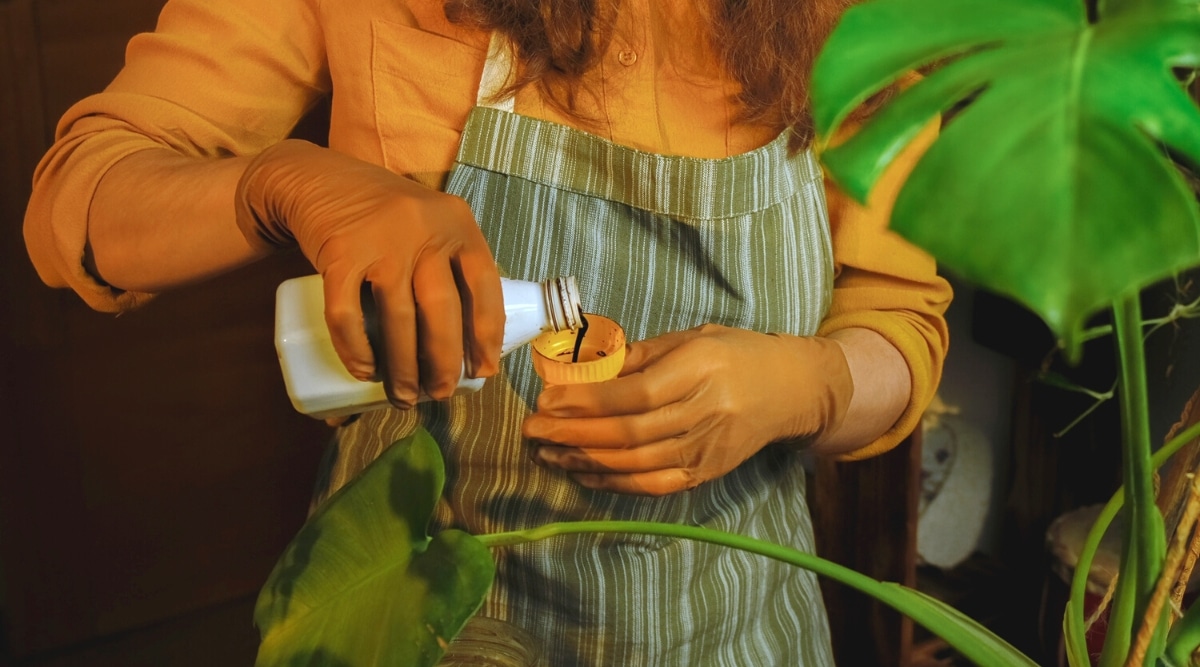
Choosing the Right Pot
Selecting the appropriate pot for your aroid is essential for its root health and overall growth. Here are some factors to consider:
Size
Choose a pot that is slightly larger than the root ball of your plant. A pot that is too large can lead to excessive soil moisture, while a pot that is too small will restrict root growth.
Follow these guidelines for sizing your pot properly:
- When re-potting, move the aroid into a container no more than 2 inches wider in diameter than its current nursery pot.
- Monitor root bound plants for symptoms like stunted growth and crowding at the drainage holes. This signals it’s time to size up.
- For prolific growers like Pothos and Monstera, plan on re-potting annually or bi-annually as their root systems rapidly expand.
- Slow-growing plants like ZZ Plants may only need re-potting every few years.
- Use container volume benchmarks as a starting point, then observe your plant’s needs. Aroids grown in brighter light often flourish in larger pots.
Regardless of pot dimensions, always select one with drainage holes to prevent waterlogged soil.
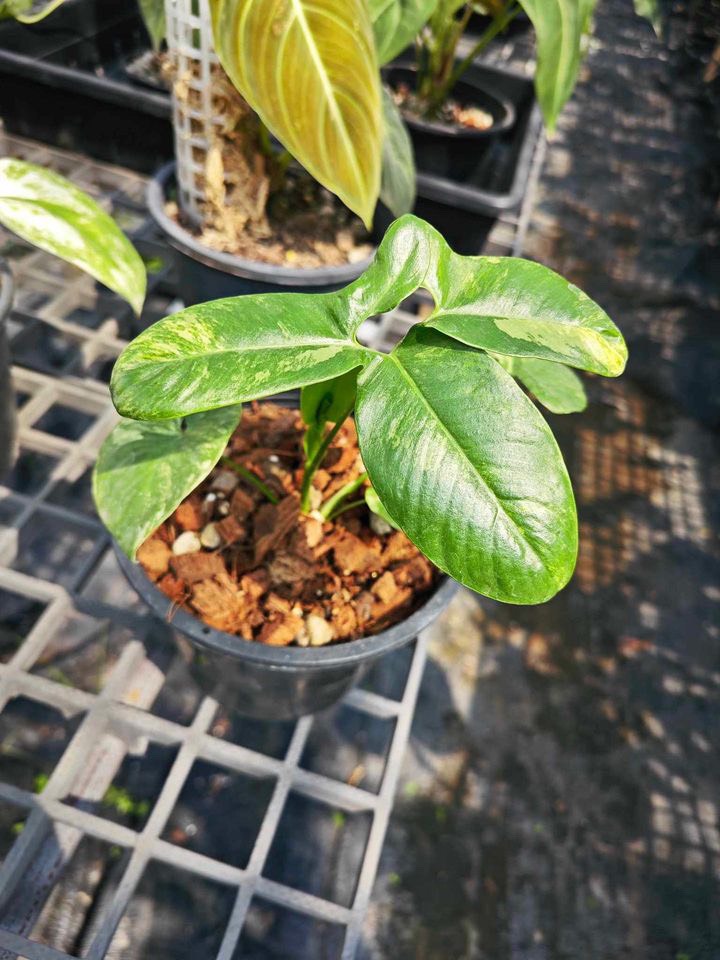
Drainage Holes
Ensure that the pot has adequate drainage holes to prevent waterlogging. If the pot doesn’t have drainage holes, you can drill them yourself or opt for a pot with a built-in saucer that allows excess water to drain away.
Here are some key benefits of proper drainage:
- Excess moisture can drain freely from the roots, preventing soggy soil.
- Allows fresh oxygen to penetrate the root zone, promoting healthy respiration.
- Minimizes risk of fungal diseases like root rot.
- Suppresses gnats and other moisture-loving pests.
If your decorative pot lacks holes, simply place the nursery grow pot inside to retain its drainage capabilities. Alternatively, add a layer of gravel at the bottom of the ornamental container to provide a drainage reservoir before filling with potting mix.
Material
Plastic pots are lightweight, affordable, and easy to clean, making them a popular choice for aroids. However, they can retain moisture, increasing the risk of root rot. Terracotta pots, on the other hand, are porous and allow for better air circulation, but they can dry out quickly and require more frequent watering.
Consider these factors when selecting a pot material:
- Plastic: inexpensive, retains moisture, slower to dry out
- Terracotta: breathable, releases moisture, requires more watering
- Ceramic: attractive, prone to cracking with temperature fluctuations
- Concrete: heavy, neutralizes moisture, decorative
Ultimately the pot material that works best depends on your specific aroid variety and growing environment. For example, moisture-loving calathea would thrive in plastic while a drought-tolerant ZZ Plant would prefer terracotta or concrete.
Proper Propagation
Aroids can be propagated through various methods, including:
- Stem cuttings
- Leaf cuttings
- Division of rhizomes
Follow these simple steps for propagating aroids:
Stem Cuttings
- Select a healthy stem with a few leaves.
- Use a clean, sharp knife or pruners to sever the stem just below a node.
- Remove lower leaves and place the cutting in water or moist propagating mix.
- Roots will begin emerging in a few weeks. Plant the cutting in soil once well-rooted.

Leaf Cuttings
- Carefully cut off a healthy leaf at the petiole.
- Allow the cut end to callous and scab over.
- Insert the end into moist potting mix. Roots will eventually sprout from the cut veins.
- Once rooted, pot up the young plantlet.
Division of Rhizomes
- Carefully remove the plant from its container.
- Use your hands or a knife to gently divide the rhizome into smaller sections.
- Re-plant segments into their own containers, allowing room for new growth.
- Keep evenly moist, providing bright indirect light as new shoots emerge. Propagating allows you to easily multiply special aroid varieties without buying new plants!
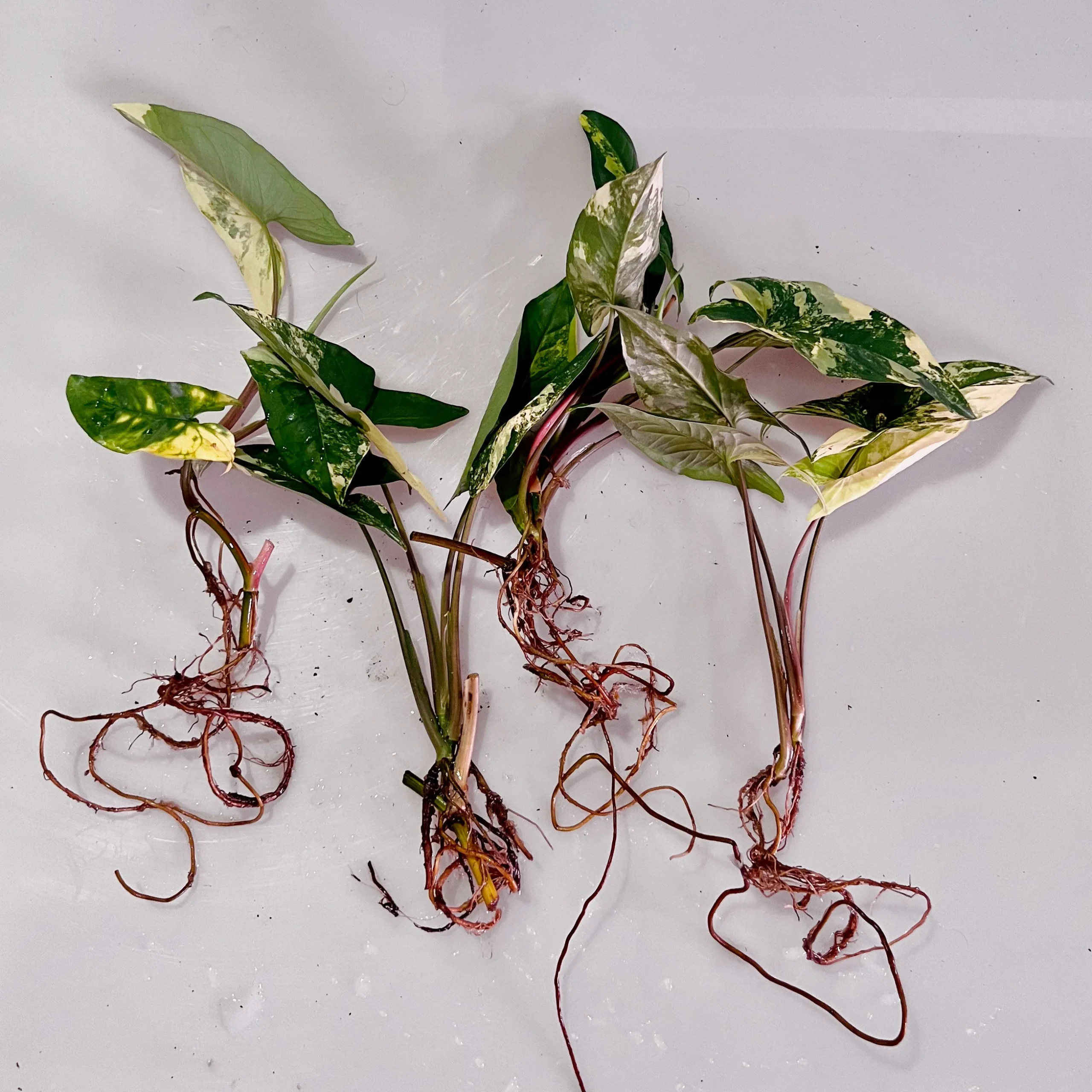
Where to buy Aroid plant? Benefits from importing plants from Thailand
- Shipping: Door to door shipping, fast and safe with Dragon Courier
- Biodiversity: Thailand is known for its rich biodiversity, including a wide variety of aroid species. This diversity allows importers to access a broad range of unique and exotic aroid plants.
- Quality and Health of Plants: The suitable climate helps the plants grown here stay healthy and of high quality.
- Cost-Effectiveness: Due to favorable growing conditions and efficient production methods, Thai aroid plants can often be more cost-effective compared to those from other countries.
- Access to Hybrid Varieties: Thai growers are often involved in the development of new hybrid aroid varieties, offering unique plants that may not be available from other sources.
Rare Aroid species are the most sought after by aroid plant lovers
Conclusion
With their stunning tropical foliage and intriguing flowers, aroids bring drama and intrigue to indoor plant collections. By following these five key steps for care – providing the right growing conditions, choosing an appropriate pot, understanding their preferences, and properly propagating – you can readily unlock the ornamental potential of these spectacular plants. Fine-tuning the basics of lighting, water, soil, temperature, and fertilization to align with your aroid’s needs is the foundation for a thriving specimen. Pair this attentive care with propagation through stem cuttings or division, and you’ll delight in watching your plant family flourish for years to come. Whether you’re nurturing a rare Monstera deliciosa, a trailing Pothos, or a statuesque Philodendron, this comprehensive guide equips you with the secrets to aid your aroids in reaching their full lush glory.

